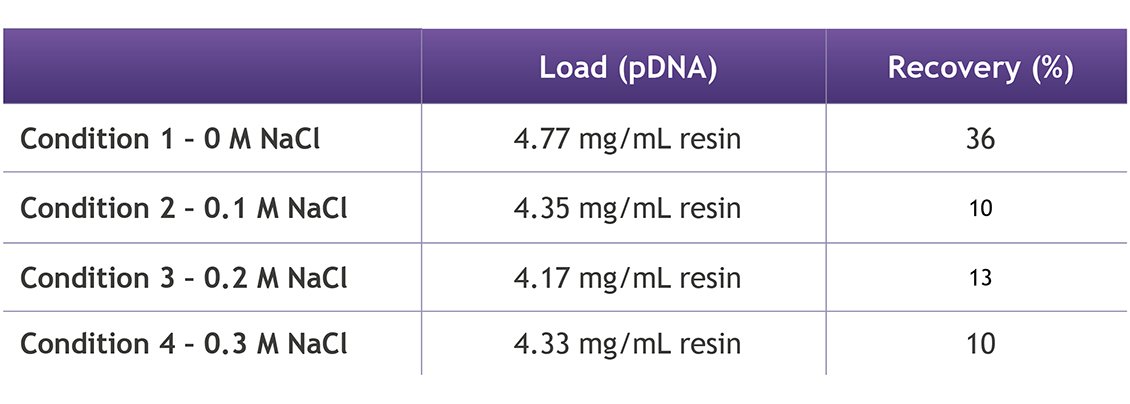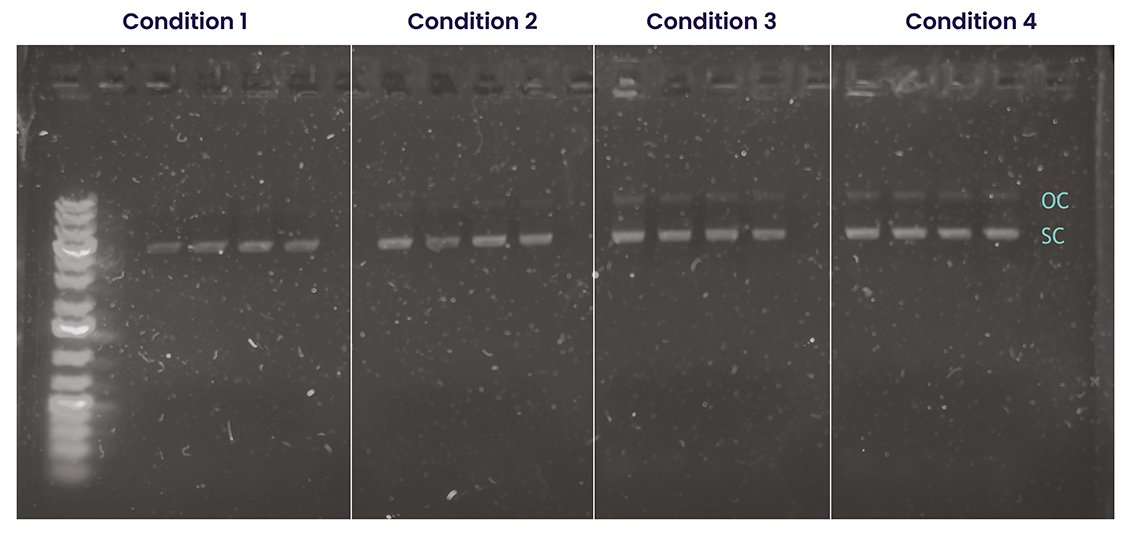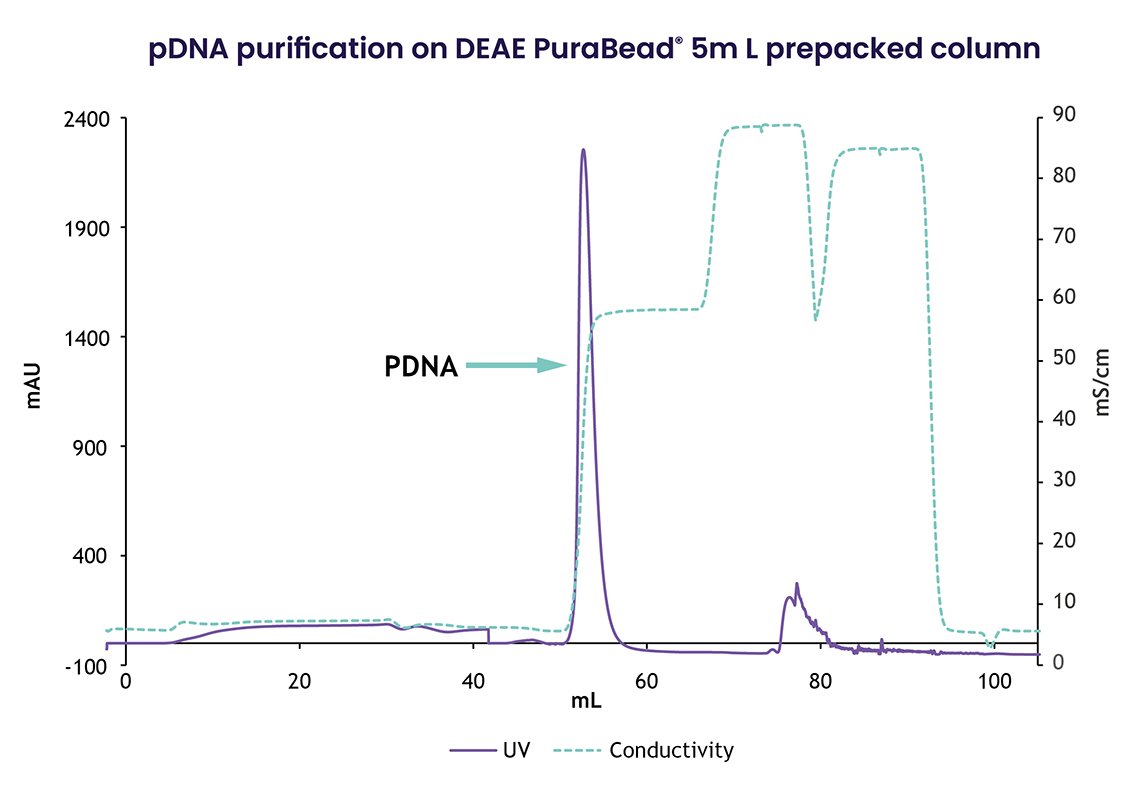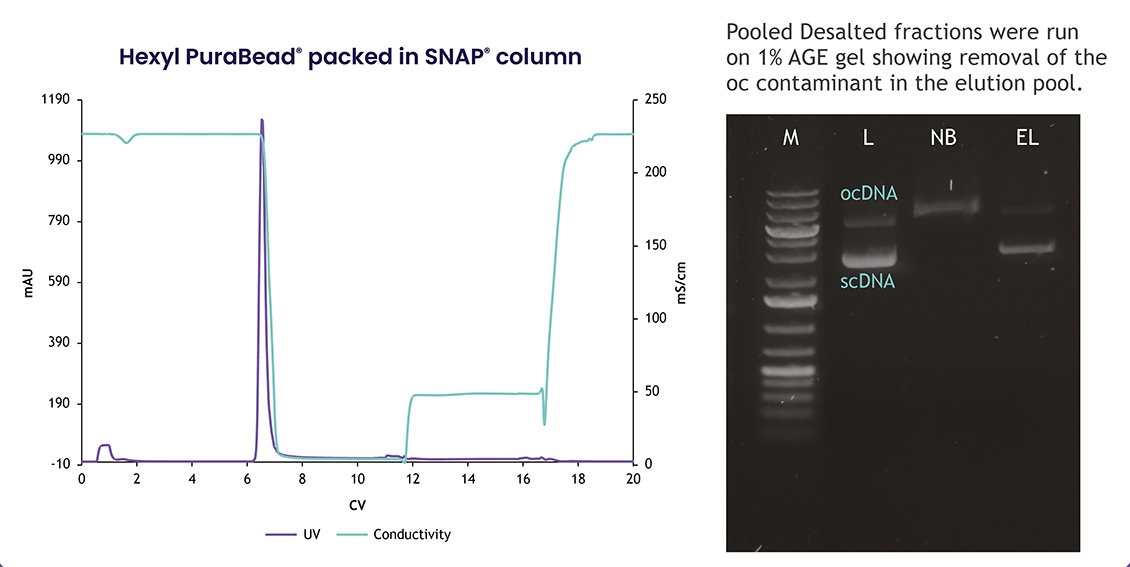Purification of Plasmid DNA for Cell and Gene Therapies: A Scalable Solution
Published date: 12 December 2023
Plasmid DNA (pDNA) plays a crucial role in various stages of Cell and Gene Therapy treatments. It serves as a therapeutic payload, a template for mRNA or closed linear DNA sequences, and as building blocks for viral vectors. Production of pDNA using E. coli cultures, however, often are challenged with the removal of impurities such as genomic DNA, RNA, host cell proteins, and endotoxin, all of which need to be effectively cleared to ensure the safety and functionality of the product. This blog post will explore the purification process of plasmid DNA at multiple scales using Astrea Bioseparations’ DEAE and Hexyl Purabead HF products, providing insights into techniques and their applications.
1. Understanding Plasmid DNA and the importance of purification:
Plasmid DNA is a small circular DNA molecule that can replicate independently within a host cell. Often, pDNA carries genetic elements used in various applications such as gene therapy, genetic engineering, and recombinant protein production. The gene of interest coded into this DNA plasmid is therefore the starting material for the production of a therapy such as the SARS-COV-2 mRNA vaccine or any AAV gene therapy.
The presence of impurities in plasmid DNA can interfere with downstream processes, such as the IVT reaction for mRNA, and affect the reliability of process outcomes. Therefore, before plasmid DNA can be used for these purposes, it is essential to isolate and purify it from other cellular components.
Effective purification processes remove contaminants such as genomic DNA, RNA, proteins, endotoxins etc., while ensuring the integrity and quality of the final plasmid DNA product. Different purification methods are available however the main industrial processes used include chromatographic techniques that exploit the unique chemical properties of DNA molecules. Here we discuss a scalable approach to plasmid DNA purification using Astrea Bioseparations’ products.
2. Conditional Screening of pDNA Capture from E. coli Lysate:
Primary capture chromatography is used to isolate pDNA from the bulk of cellular contaminants. To investigate the capture of pDNA from E. coli lysate, a conditional screening experiment was conducted using DEAE PuraBead® P6HF RoboColumns® and an automated liquid handler. The results demonstrated the capture efficiency of pDNA under different buffer conditions and confirmed the effectiveness of DEAE PuraBead® HF as a capture agent.

Table 1. The flow rate for the RoboColumns® was 3 µL/s (1.1 minute residence time).
3. Consistent Performance at Small Scales:
Further experiments showed that DEAE PuraBead® P6HF consistently performed well across technical repeats at small scales, indicating its reliability and reproducibility.

Fig 1. 1% agarose gel electrophoresis of desalted pDNA eluted from 4 separate conditions described above.
4. Scaling Up to Process Development:
The successful conditions identified in the lab-scale screening were then scaled up to a 5 mL process development column, which demonstrates scalability to enable the purification of larger volumes for production of pDNA. The use of DEAE PuraBead® P6HF proved to be an effective solution for downstream processing.

Fig 2. System flow 5 mL/min with sample application at 1.6 mL/min for a 3 min residence time.
5. Polishing pDNA Using a Hydrophobic Resin:
Screening of the 4 HIC adsorbents on the P6 PuraBead® Butyl, Hexyl, Octyl and Phenyl, (data not shown), indicated that for the sequence tested, the Hexyl ligand gave the best separation between the isoforms.
The effectiveness of Hexyl PuraBead® in removing OC pDNA was demonstrated using a 10 cm bed height column in a 10 mm SNAP® column (8 mL column volume).
The results showed successful removal of OC contaminants in the elution pool, confirming Hexyl Purabead is a scalable solution for the polishing of pDNA products.

Fig 3. 8 mL column elution profile with 1% agarose gel: M- Marker, L- Load, NB- Non-Bound and EL- Elution.
6. Effective OC Contamination Removal at Process Scale:
The final experiment (fig 3) showcased the effectiveness of Hexyl PuraBead® in removing OC contamination at the process scale. Pooled desalted fractions were analyzed, confirming the removal of OC contaminants and the purification of pDNA.
Conclusion:
As the demand for Cell and Gene Therapies increases, so does the need for reliable and scalable purification solution for pDNA. DEAE and Hexyl functionalized agarose-based adsorbents, such as DEAE PuraBead® P6HF and Hexyl PuraBead® HF, offer an effective and scalable approach to pDNA downstream processing. DEAE is used for capture, while Hexyl provides a polishing step for the removal of OC contamination. These adsorbents are available in various formats, including RoboColumns® for automation, prepacked columns for lab-scale work, as well as large-volume slurries for industry-scale applications. Regardless of the scale, PuraBead® P6HF with DEAE and Hexyl ligands offer a reliable solution for the capture and purification of plasmid DNA, ensuring high purity and functionality for Cell and Gene Therapy applications.

